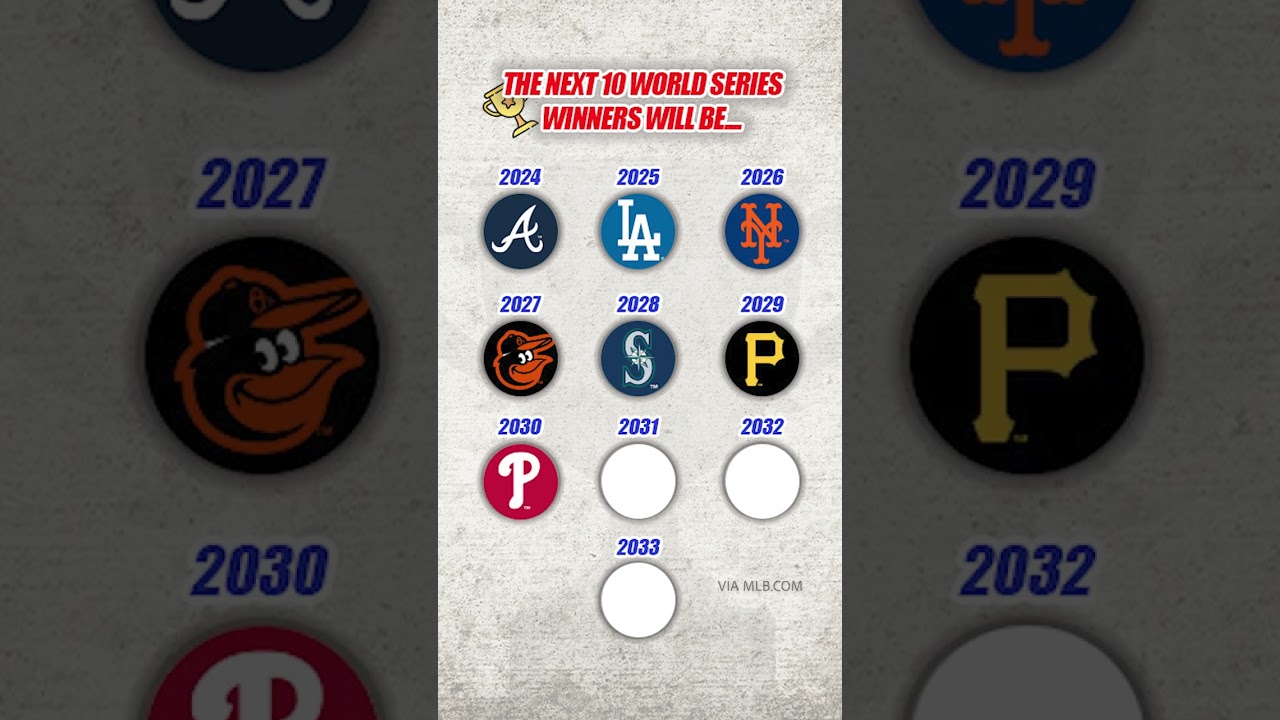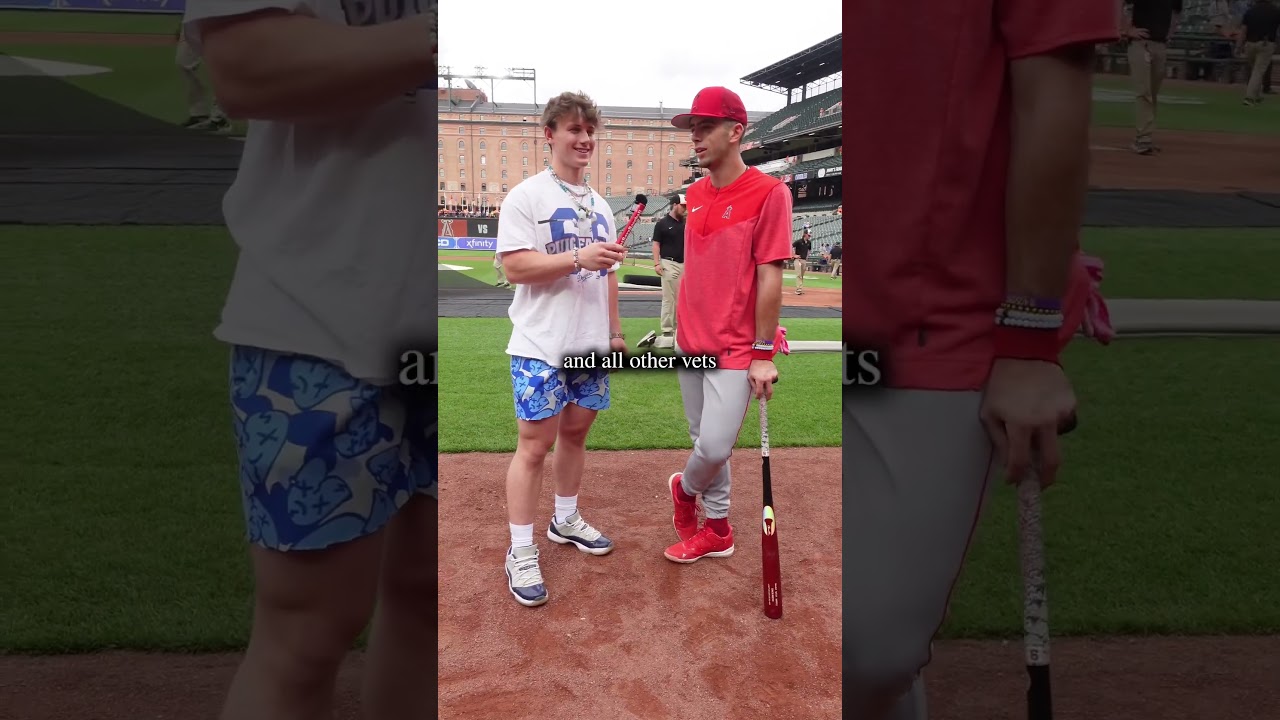Have you ever found yourself wondering about the fastest route to the top in sports, particularly baseball? It's a question many curious minds ponder, especially when thinking about the sheer talent seen in young athletes. The idea of someone just stepping onto a major league field, skipping all the steps, is pretty captivating, isn't it? So, in a way, this very thought gets people searching for answers about that direct path.
It's a dream for so many young players: hitting a ball out of the park or throwing a perfect strike in front of thousands of cheering fans. The thought of going from a high school field or a college diamond straight to the bright lights of a big league stadium is a powerful image. That, you know, immediate leap to professional glory feels like something out of a storybook, and it really makes you think about what's possible.
But the question itself, "Has anyone ever gone straight to the MLB?", is interesting not just for its subject matter but also for how it's phrased. It uses a specific kind of English structure to ask about past events that have a connection to the present. This phrasing, as a matter of fact, helps us explore whether such a direct journey has ever happened, or if it's just a hopeful idea.
Table of Contents
- The Heart of the Question: Grammatical Nuances and What It Really Asks
- The Path to the Pros: Why "Straight to MLB" is So Rare
- Historical Context: Was It Different Before?
- The Unlikely Exception: When "Straight" Might Have a Different Meaning
- What It Takes to Reach the Big Leagues
- Frequently Asked Questions About Reaching the MLB
- The Journey, Not Just the Destination
The Heart of the Question: Grammatical Nuances and What It Really Asks
When someone asks, "Has anyone ever gone straight to the MLB?", they're really asking about an experience that might have happened at any point up to now. It's a common way to inquire about past events that still hold relevance. This way of speaking, you know, helps us explore possibilities that stretch across time.
Understanding "Has Anyone Ever..."
The phrase "Has anyone ever..." uses what we call the present perfect tense. It's about an action that started in the past and continues or has an effect in the present. For instance, if you say, "Have you ever had a car?", you're asking about an experience at any point in someone's life, right up to this moment. Similarly, "Has anyone got a black pen?" is a common way to ask about current possession. This structure, in some respects, is very useful for broad inquiries about past occurrences.
Our own language insights tell us that "has" in such questions indicates a kind of "perfection," meaning the action is completed but its impact or possibility still exists. It's different from saying "Did anyone go straight to the MLB?", which would ask about a specific past event. The "has" form, you see, covers a wider, more general span of time, making it perfect for wondering about historical or ongoing possibilities. So, it's actually a pretty precise way to phrase such a broad question.
Why We Ask This Way
We often use "has" in questions like this because we're looking for a completed action that has some bearing on the present situation or our current understanding. For example, "The cake has been eaten" tells you something about the cake's current state. When we ask, "Has anyone ever gone straight to the MLB?", we're trying to figure out if such a direct path is a historical reality or just a theoretical idea. It's about whether this specific kind of achievement has, you know, ever materialized. This is why we might say "she plays" but also "she does play" for emphasis; the auxiliary verb "do" or "does" helps frame an assertive or negative statement, while "has" often helps frame questions about completed actions with present relevance. So, this exercise, in a way, is about clarifying the verb form that best suits the inquiry.
The question isn't asking about a specific person or a single instance, but rather the general possibility. This kind of inquiry, using "has," allows for a broad search for any such occurrence throughout history. It's a bit like asking, "Has tea come?" or "Has lunch ready?" – you're asking about a state of completion that affects the present moment. This approach, apparently, helps cover all bases when looking for a rare event.
The Path to the Pros: Why "Straight to MLB" is So Rare
Now, let's turn to the baseball side of things. The idea of going "straight" to the MLB is, frankly, almost unheard of in the modern game. The journey to the big leagues is a long and winding one for nearly every player. It's a process built on development, experience, and proving oneself at various levels. So, to be honest, it's a path that usually takes a lot of time and effort.
The Modern Draft System
Today, most players who eventually reach the MLB enter through the amateur draft. This yearly event allows teams to select promising young players from high schools and colleges. Once drafted, these players don't just, you know, show up in a big league uniform. They become part of an organization, and their professional journey begins at the very bottom of the ladder. This system, by the way, ensures a structured entry into professional baseball.
There are thousands of young athletes drafted each year, and only a small fraction ever make it to the major league level. It's a highly competitive environment where every player is striving to improve and stand out. This system, in fact, is designed to identify and cultivate talent over time, not to facilitate instant promotions.
The Minor League Ladder
The minor league system is the backbone of player development in baseball. It's a multi-tiered structure, typically ranging from Rookie ball up through Triple-A. Each level presents increasing challenges and helps players refine their skills against tougher competition. This gradual progression, you know, is absolutely crucial for a player's growth.
Players spend years in the minor leagues, learning the professional game, adjusting to the rigorous schedule, and working on their specific areas for improvement. They might start in a small town, playing in front of a few hundred fans, and slowly work their way up. It's a continuous process of learning and adapting, and it really tests a player's resolve. So, it's pretty much a long apprenticeship.
This system allows teams to assess a player's readiness for the big leagues, both physically and mentally. It's where pitchers learn to command their pitches, hitters learn to adjust to different styles of throwing, and fielders hone their defensive skills. The minor leagues, in short, are a vital proving ground where players must consistently perform to earn a promotion. It's a place where, literally, every aspect of a player's game is evaluated.
Physical and Mental Demands
Playing professional baseball, even in the minor leagues, is incredibly demanding. Players face a grueling schedule, constant travel, and immense pressure to perform. They have to stay in peak physical condition and develop the mental toughness to handle setbacks and long seasons. This constant grind, you know, really separates those who can make it from those who can't. It's a pretty tough existence, honestly.
The jump from amateur baseball to the professional level is significant. The speed of the game, the quality of the competition, and the sheer volume of games all increase dramatically. Players need time to adjust to these new realities. This is why, in a way, the minor leagues are essential; they provide that crucial transition period. It's a rather intense adjustment, to be fair.
Historical Context: Was It Different Before?
While the modern system makes a direct leap to MLB nearly impossible, it's worth considering if things were different in baseball's earlier days. The game has evolved significantly over more than a century, and so have the pathways for players. So, it's worth asking, was it always this structured?
Early Baseball Days
In the very early days of professional baseball, the structure was far less formal. There wasn't a comprehensive minor league system as we know it today, nor was there a formal draft. Teams might sign players directly from local amateur clubs or independent teams. A talented player, you know, might have a slightly more direct route to a professional roster in those times.
However, even then, players typically had some experience playing at a high level, perhaps in semi-pro leagues or on barnstorming teams. The idea of someone with no prior professional experience just walking onto a major league field was still, you know, quite rare. The game was different, but the need for proven skill was still there.
Evolution of Player Development
Over time, baseball organizations realized the importance of developing their own talent. This led to the creation and expansion of the minor league system, which became the primary pipeline for future major leaguers. Scouting networks grew, and scientific approaches to training and conditioning became standard. This evolution, as a matter of fact, professionalized the path to the big leagues.
The game became more specialized, and the level of play increased across the board. This meant that players needed more time and structured instruction to develop the skills necessary to compete at the highest level. The idea of "straight to MLB" became less feasible as the game itself, you know, grew in complexity and competition. It's almost as if the bar just kept getting higher.
The Unlikely Exception: When "Straight" Might Have a Different Meaning
While a truly "straight" path to the MLB is virtually non-existent today, there are instances where players spend a very limited amount of time in the minor leagues. These are usually highly touted prospects who are considered exceptionally advanced for their age. They're not going "straight" in the literal sense, but their journey is, you know, remarkably quick.
The "Draft and Fast-Track" Scenario
Some top draft picks, particularly those with exceptional college experience or rare talent, might spend only a year or two, or even less, in the minor leagues before getting called up. They might skip certain levels or move through them very rapidly. This is still, you know, a significant amount of professional experience, but it's a much shorter stay than for most players. So, it's a fast track, but not a direct jump.
These players are often considered generational talents, possessing skills that are already near major league ready. Even for them, however, there's still a period of adjustment to the professional game, whether it's in a short stint in rookie ball or a quick promotion through the higher minor league levels. It's about proving
Related Resources:



Detail Author:
- Name : Roslyn Gerlach
- Username : kenyatta.shields
- Email : larson.selena@yahoo.com
- Birthdate : 2004-12-02
- Address : 5413 Alba Glen West Camylleport, AL 00569-0365
- Phone : +1 (838) 645-9474
- Company : Feest, Wolff and Kessler
- Job : Food Preparation and Serving Worker
- Bio : Animi quam quos asperiores id rerum. Exercitationem nemo et molestiae dolores autem ut minima. Aspernatur pariatur quia est ut autem asperiores unde.
Socials
twitter:
- url : https://twitter.com/harley9378
- username : harley9378
- bio : Et cum et et omnis molestiae optio. Quis animi repudiandae veniam dolor excepturi nihil. Sed libero quos beatae sunt nam dignissimos.
- followers : 5255
- following : 650
instagram:
- url : https://instagram.com/harley643
- username : harley643
- bio : At vel ut a qui quia laborum. Necessitatibus sit et magnam eius dolorem quia adipisci eos.
- followers : 1839
- following : 1127
linkedin:
- url : https://linkedin.com/in/htillman
- username : htillman
- bio : Doloremque omnis molestiae hic necessitatibus.
- followers : 5756
- following : 728
facebook:
- url : https://facebook.com/harley4382
- username : harley4382
- bio : Quia recusandae ipsum velit. Rem suscipit non nesciunt quia itaque.
- followers : 4621
- following : 143